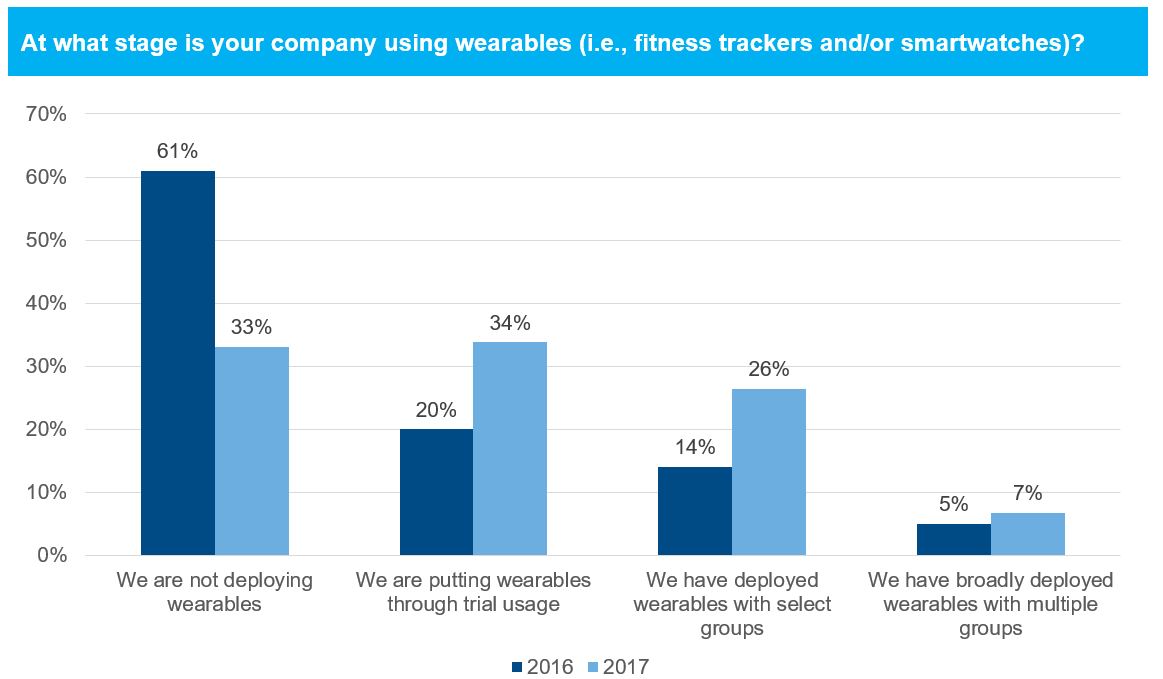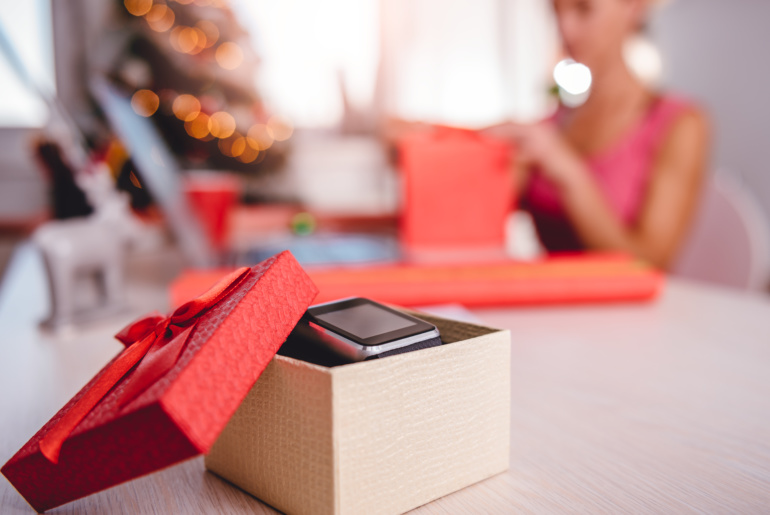With Halloween now firmly in the rear view mirror, I – along with numerous retailers – am turning my attention to holiday shopping. Naturally, the tech fan in me expects all number of smart compute devices to make it on many consumers’ lists from tablets to smartphones, from PC’s to smart speakers, and even some of the emerging products like AR/VR and drones.
What about wearables?
It wasn’t that long ago that wearables were on the “hot lists” of gifts to give or receive, and that was fine considering their novelty and status symbol for many. Waking up Christmas morning to a brand-new fitness tracker? Yes, please! Showing off a shiny new smartwatch at the dinner table? Of course! Challenging friends and relatives about who could post the highest step count before New Year’s? Bring it on! But it didn’t take that long for the hype to wear off and for attention to go elsewhere. Meanwhile, the wearables market continued to grow, albeit at a slower pace, with vendors relying on dwindling assortment of first-generation devices. Some companies even folded up and withdrew from the market altogether.
But you know what happened along the way? Those companies that chose to stay in the market slowly introduced improvements and innovations, making many of those first-generation devices look quaint. What first started out as a limited set of features became a longer and helpful list of functionalities enabling communication, efficiency, and productivity. The basics – step counting, calories burned, total distance covered – are all still there. But now wearables are getting into coaching, monitoring for potential heart ailments, and even female health tracking. Beyond health and fitness, LTE connectivity on smartwatches has opened up a new world to communicate, update data feeds, and stream music.
Layer on top of that what third-party applications can do, serving up bite-size pieces of glanceable and sometimes actionable information. Another positive development: most of these devices actually look good. The early wearables mostly focused on function over form, but today you can get both. And in case you didn’t notice, prices have been coming down too, even on some of the new models that were just announced. And that’s before the expected price reductions for Black Friday and Cyber Monday.
As much as a wearable device can help with personal productivity, it can also help with work productivity. In a recent survey, IDC determined that adoption of wearables – concentrating only on fitness trackers and smartwatches – within the enterprise has been on the rise, with companies moving away from not deploying wearables at all to putting them to trial usage and then with select groups.

Likewise, most of our survey respondents indicated that approximately a third of their workers use corporate-sponsored smartwatches, and that more than half use corporate-sponsored fitness trackers. Of course, these data points only take into account corporate-sponsored use. The good news is that nearly two-thirds of our survey respondents reported that they had a Bring-Your-Own-Device (BYOD) policy for wearables, so the fitness tracker or smartwatch you give or receive could be connected to the company. For those of you with smartwatches, you may be encouraged to know that nearly seventy percent of our respondents use third-party applications, with most if those apps addressing service management and operations.
All things considered, the wearables market has put itself in a much better position, and it shouldn’t surprise that someone(s) in your circle may want one this holiday season.
What to know before choosing
The most common question I get around this time of year is, “Ramon, which wearable should I get?” It’s a fair question, usually coming from people who already own a wearable but lately it’s been a lot of first timers instead. And it’s a fun one too because everyone has different needs and wants. With that in mind, I share with you my top tips and questions on choosing a wearable.
What do you want your wearable to do? Do you want a wearable that focuses only on health and fitness or are you looking for a multi-purpose device? This narrows the field really fast, especially between fitness trackers and smartwatches. Not all wearables are created equally, and the more features you want, the higher the price gets.
Take a look at this year’s models AND last year’s models. Last year’s models usually come in cheaper and still work well, but you miss out on the latest hardware innovations. In the case of smartwatches, last year’s models will usually work with this year’s and most likely next year’s operating system, so you won’t miss out on too many software-driven features.
Try one – or even several – on. Ever buy a car without at least sitting in the driver’s seat to get the feel of it? Me neither. So why not spend a couple of minutes trying a wearable on? This is especially for the smaller-wristed folk, because you don’t want to be weighed down by a larger device. And since wearables are an extension of the wearer’s sense of style, wouldn’t you like to see how it looks on you?
Ask someone who already has the one you want. My favorite question to ask them is what they like the least about their device. My next one is would they buy this same model again.
Getting a wearable through work? Some corporate wellness plans – and health insurance plans – will subsidize the cost of a wearable, especially fitness trackers. This may, however, require you to report your data to your health care provider. Check the details. The same applies for smartwatches, but also be aware of how your IT department wants to manage your device’s security and applications.
If you are getting a smartwatch, consider insurance. Just like any smartphone, a smartwatch is susceptible to accidents and malfunctions. Some vendors offer it with their device, or you can purchase it through the retailer. Better yet, if you have insurance for your smartphone, extend it to your smartwatch.
Your buying doesn’t stop at the purchase of a wearable. There’s plenty more to buy to go along with that wearable: interchangeable bands, protective covers and cases, and in the cases of smartwatches, there’s plenty of third-party apps and watch faces to get, along with the option of cellular connectivity (assuming your smartwatch supports it). Most of these are subject to personal tastes, but for my time, having an extra charger – either for the office or while traveling – is a good investment.
Looking something completely different? I suspect that most people looking for a wearable would opt for a fitness tracker or a smartwatch, and most of my tips reflect that. But if you are looking for a wearable that is apart from the norm, take a look at a relatively new group called hearables. These are essentially earbuds plus one other feature, like coaching, fitness tracking, audio frequency modulation, and even language translation. It could be the gift that someone wasn’t expecting.
With the holiday season closing in fast, don’t be surprised that someone may put a wearable on their wishlist. And why not? In their short history, wearables have quickly stepped into the limelight, retreated briefly, and have come back with their strongest value proposition yet. You may end up buying one, or even several, for someone else, and may end up getting one for yourself too.
Want to learn more about will happen in the wearables market next year?




